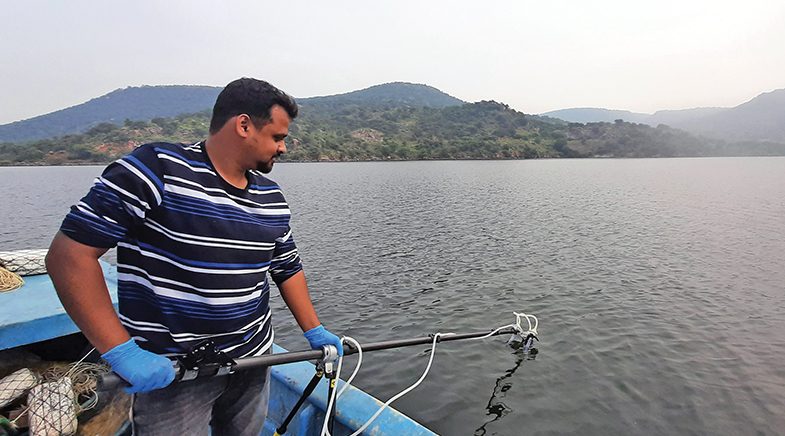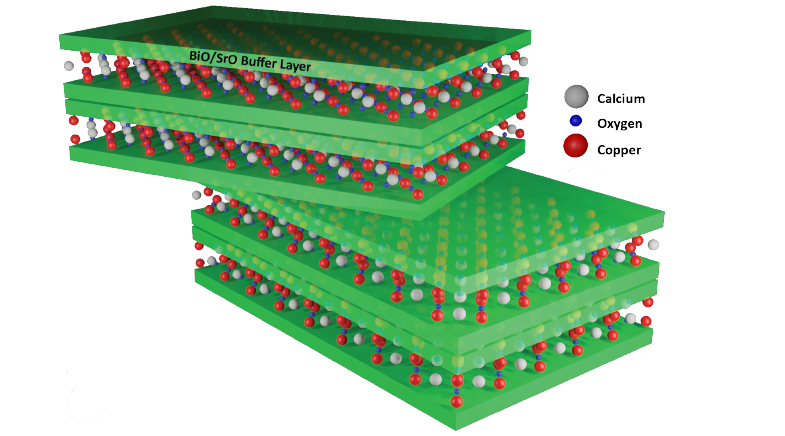Up in the air
-
- from Shaastra :: vol 04 issue 09 :: Oct 2025

From the albatross to the featherwing beetle to the dandelion, the physics of flight is the outcome of evolution over millions of years.
In the Southern Oceans, from the Falklands to the Antarctic, thousands of birds with one of the largest wingspans gather each year. Each albatross female lays one egg. As the chick hatches and grows, for weeks it vigorously flaps its wings on the ground and holds them out in the wind to strengthen its flight muscles. It loses its down, grows adult feathers, and practises brief hovering or short 'hops' when high winds sweep across the breeding site. The process culminates when the chick, lighter and fully feathered, often sprints into strong wind, sometimes off a cliff or headland, to launch into its first flight, gliding out to sea without any parental assistance. This flight can last from several months to a few years, often without landing, skimming the ocean surface for food. After each foraging, the bird returns to its breeding ground to mate and reproduce.
The albatross and the condor, another large wingspan bird, are examples of soaring birds that have evolved distinct aerodynamic designs to maximise efficiency. Their wings are characterised by a high aspect ratio, meaning they are exceptionally long and narrow relative to their width. This specific morphology is a crucial adaptation for endurance flight because it significantly reduces lift-induced drag. Lift-induced drag is an unavoidable consequence of lift generation, and it becomes particularly high at the slow speeds typical of soaring. By minimising this drag, high-aspect-ratio wings allow these birds to cover vast distances with minimal energy expenditure.
A monthly column that explores themes on nature, nurture and neighbourhood in the shaping of form and function.
In addition to their large span, the wings of many soaring birds, such as the condor, feature deep slots at the wingtips, which further help to reduce induced drag. This specific wing shape represents a significant evolutionary compromise. While less manoeuvrable than the low-
aspect-ratio, elliptical wings of smaller birds that navigate dense vegetation, the high-aspect-ratio wings are optimised for low energy consumption and long-distance travel. This trade-off aligns with the life histories of these birds, which must forage over immense territories in search of scarce resources, making endurance and efficiency paramount for survival.
ENERGY-EFFICIENT FLIERS
The albatross, a master of oceanic flight, employs a specialised soaring technique known as dynamic soaring. This method allows the bird to fly for hours over the open ocean without a single wing flap, a phenomenon that has fascinated observers for centuries. Dynamic soaring is fundamentally an energy-neutral technique that exploits the vertical gradient of wind velocity, or wind shear, that exists just above the ocean surface.
The core principle behind dynamic soaring is that energy is gained from the environment, which is an impressive feat considering that energy-neutral soaring is impossible in steady, homogenous horizontal wind. The albatross uses a rollercoaster-like flight pattern to gain kinetic energy repeatedly. The bird climbs up into the faster-moving air layer while heading into the wind, then turns and descends into the slower-moving air layer while flying downwind. This cyclical manoeuvre allows the bird to seemingly pump energy "out of what looks like nothing" (bit.ly/albatross-soar).
For many years, mathematical models of this process, initially described by renowned English physicist Lord Rayleigh, assumed that the most efficient trajectory would involve a series of wide, 180° half-circles. This assumption was based on the premise that a bird should maximise the differential in speed between the two wind layers to gain the most energy. However, recent numerical modelling and empirical data from GPS recordings of actual albatrosses have challenged this long-held belief. The data reveal that these birds tend to fly in much shallower arcs, turning by an average angle of approximately 60°, a significant deviation from the previously assumed 180° turn.
In addition to their large span, the wings of the condor feature deep slots at the wingtips, which further help to reduce induced drag.
The reason for this counterintuitive finding lies in a more nuanced understanding of the energy trade-offs involved. While larger turns yield more airspeed in a single manoeuvre, the constant drag forces incurred while turning result in a significant loss of energy. The new models demonstrate that it is more energy-efficient to make smaller, more frequent turns. This strategy allows the bird to gain a little bit of airspeed often, as the gains from repeated crossings between the slow and fast wind layers outweigh the smaller, cumulative losses from turning drag. This finding is a powerful example of how the combination of theoretical physics and real-world observation can overturn long-standing assumptions, revealing the subtle yet highly optimised biomechanics that govern these magnificent creatures' flight.
THE BEETLE AND THE DANDELION
Far away from the Antarctic Oceans, in the forests of Vietnam, a tiny beetle lives for a few weeks, mates, and dies in rotting debris. Paratuposa placentis, the featherwing beetle, is the smallest free-living insect known. A third of a millimetre long, its wingspan is a mere 0.01429% (or 1/7,000) that of the albatross. That it can fly at all is remarkable, and that it does at high speed even more so. These tiny beetles achieve exceptional flight performance, flying and accelerating at speeds comparable to insects three times their size, despite having smaller flight-muscle volume. This remarkable capability comes from a combination of a novel wing-motion cycle and a very low wing mass. Instead of the typical membranous wings, these beetles have 'bristled' or 'feather-like' wings, a condition known as ptiloptery. This wing architecture results in an incredibly low wing mass, roughly 1% of the beetle's total body mass. The low mass reduces the power needed for flapping, allowing the beetle to sustain flight without the need for the kind of energy storage that is common in other flying animals. The beetle's wings flap in a distinct figure-of-eight loop, which includes claps above and below the body, a flight style that is unique to this family of beetles. Beetles also have hardened forewings, called elytra. The featherwing beetle opens and closes its elytra with large amplitudes in a synchronised motion with its wings, using them as an 'inertial brake' to prevent excessive body oscillation. This mechanism enhances posture stability and is an ingenious solution to the pitching created by the high-amplitude wing motion.
SCAN & WATCH

Dandelions are found in almost every temperate region across the globe, thriving in lawns, fields, gardens, roadsides, and disturbed soils. The plant grows a rosette of leaves, sends up a flower stalk, and blooms with yellow florets that later transform into the signature spherical seedhead. Seed dispersal typically occurs 2-4 days after flowering, when the head opens and releases seeds equipped with feathery parachutes for wind travel, especially in spring and summer. But these are strange parachutes, with large gaps between each feathery protrusion; it is remarkable that dandelion seeds float and do so over large distances.
SCAN & WATCH

The flight of a dandelion seed presents a unique and elegant paradigm that fundamentally subverts the principles of powered animal flight. Unlike a bird or an insect that must overcome the forces of drag and gravity by generating lift and thrust, the dandelion seed's flight mechanism is purely passive and relies entirely on exploiting the forces of the wind. The dandelion is not a propulsive flyer; it is a drag-based flyer, where the desired force is drag, and drag is not a force to be overcome.

The dandelion seed's parachute, known as a pappus, is a remarkable feat of natural engineering. It is a porous structure, a bundle of approximately 100 fine filaments that can be conceptually modelled as a porous disc. This porosity is the key to its unique aerodynamic performance. Unlike a solid, impermeable object, the pappus allows a small amount of air to pass through its filaments, an aerodynamic feature that gives rise to a truly unique phenomenon called the Separated Vortex Ring (SVR), a stable, hovering ring of circulating air that forms above the pappus as the seed falls. This fluid dynamic phenomenon, previously only considered in theory, creates a low-pressure region above the seed that retards its fall toward the ground. For an impermeable object, a vortex would form and then become unstable, detaching and causing the object to tumble chaotically. However, the dandelion's pappus, by allowing a controlled amount of air to flow through it, stabilises the vortex. The SVR remains at a fixed height above the pappus, providing continuous drag and a high degree of flight stability.
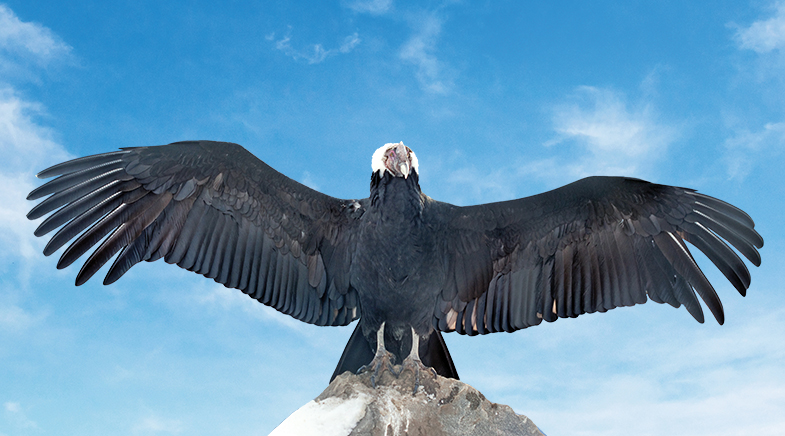
The stability of the SVR is a direct consequence of the porosity of the pappus. The evolutionary 'design' of the dandelion seed has resulted in an astonishingly high porosity of approximately 92%. This seemingly empty structure is perfectly optimised for its purpose. If the porosity were any lower, the resulting vortex would become unstable, leading to a chaotic descent and a significantly reduced dispersal range. The approximately 100 filaments found on a real dandelion seed represent the perfect balance: a number that maximises the drag generated by the SVR while remaining just porous enough to ensure the vortex's stability and thus, the seed's linear flight. This is a powerful demonstration of how an organism can leverage a complex fluid dynamic principle to achieve its biological goal, a masterpiece of drag-based flight.
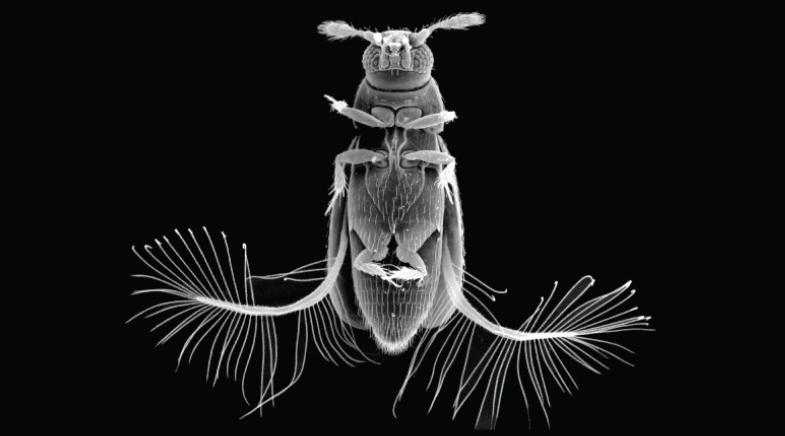
The dandelion pappus has an additional, non-aerodynamic mechanism for dispersal that is triggered by atmospheric humidity. The filaments of the pappus are attached to a central, radial structure called the actuator. When exposed to moisture, this actuator swells, causing the filaments to close inward like an inverted umbrella. This reduces the surface area of the pappus, which in turn decreases the drag and causes the seed to fall more quickly. This mechanism, which operates on dead cells and requires no active biological signalling or energy, is a sophisticated survival strategy. Humid conditions often precede rain: these provide an ideal environment for the seed to germinate. By sensing high humidity and reducing its airtime, the seed increases its chances of landing in a favourable, moist location rather than being carried indefinitely in the air. This elegant biomechanical sensor-actuator system, working passively and autonomously, exemplifies the multi-layered optimisation that has enabled the dandelion's success.
WINGING IT
The physics of flight undergoes a profound shift as the scale of the organism changes. This is best understood through a number used in fluid mechanics called the Reynolds number. This represents the ratio of inertial forces to viscous forces within a fluid. For large, fast-flying animals such as condors and albatrosses, and most aircraft, the Reynolds number is very high. In this regime, inertial forces — related to the momentum of the moving air — dominate. Soaring or gliding is feasible. The fluid can be treated as a low-viscosity medium, and lift is generated predictably and efficiently through the steady flow of air over a rigid airfoil.
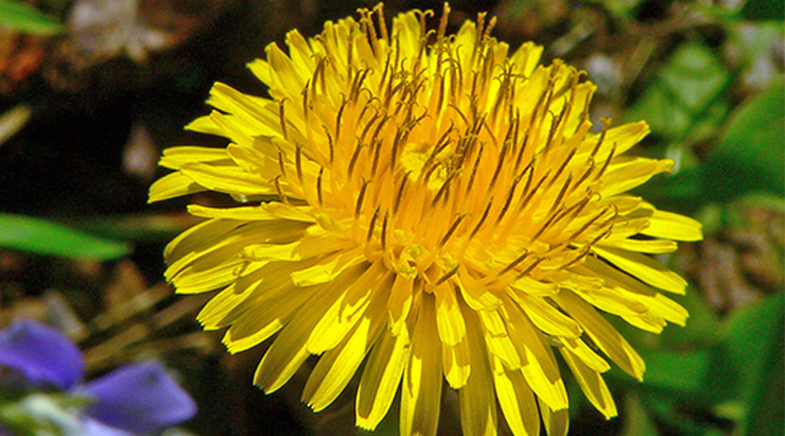
In stark contrast, small, slow-flying animals, particularly insects, and micro-air vehicles, operate in a low Reynolds number environment. Here, the viscous forces, often referred to as the 'stickiness' of the air, become dominant. The fluid no longer behaves as an ideal, low-friction medium. In this regime, traditional airfoil-based lift generation is insufficient to overcome gravity, and these organisms must employ specialised, highly unsteady aerodynamic mechanisms. The flight of these small flyers is characterised by complex, large-scale vortex structures that are continuously formed and shed from their wings. The flexibility and corrugation of insect wings are not merely structural features but are integral to these unsteady aerodynamic mechanisms. This distinction in fluid dynamics provides a foundational framework for understanding the diverse and often counterintuitive flight strategies observed across the animal kingdom, and indeed in plants — as seen with the dandelion.
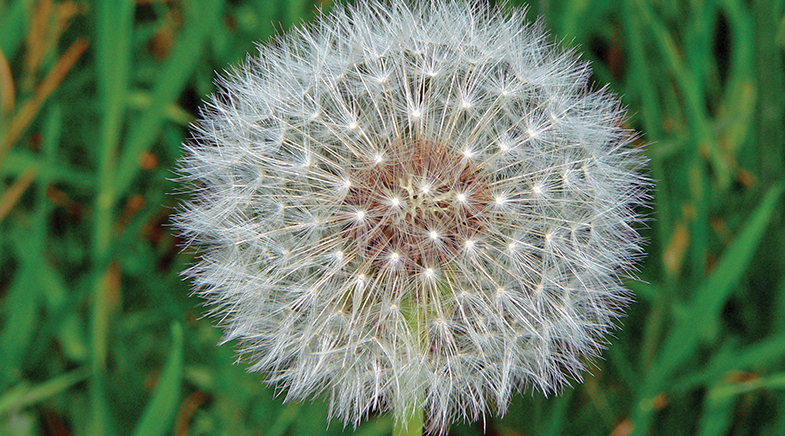
The study of biological flight reveals a rich tapestry of evolutionary solutions to a universal physical problem. The transition from large-scale, high Reynolds number flight to the low Reynolds number realm of insects introduces a shift from steady, predictable aerodynamics to a world of unsteady, vortex-driven forces. This fundamental change dictates everything from wing morphology and kinematics to metabolic cost and flight purpose.
In every instance, from the albatross to the dandelion, flight is not a singular, ideal solution, but a highly optimised, context-specific outcome of millions of years of selective pressure. The diversity of these mechanisms underscores the incredible ingenuity of nature in solving one of the most fundamental challenges of locomotion.
Have a
story idea?
Tell us.
Do you have a recent research paper or an idea for a science/technology-themed article that you'd like to tell us about?
GET IN TOUCH










